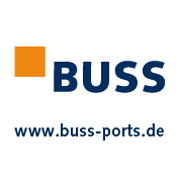A reliable operator of several German terminals, Buss Port Logistics is known for providing a sterling service to the wind industry’s most demanding clients. PES takes a closer look at the company.
Buss Port Logistics operates efficient multi-purpose terminals in Hamburg and other ports, and represents a diverse range of port-specific services. The terminals handle containers, project cargo, general cargo and bulk cargo and are supported by a comprehensive range of in-house port services: stevedoring, lashing and securing, export packaging and Container Freight Station (CFS).
Buss Port Logistics is also planning and developing new port facilities. As an offshore wind logistics expert, Buss provides base, production and service port facilities and terminals in Eemshaven, Sassnitz and Stade. The services include ‘made by Buss’ quality with tried and tested solutions that fit seamlessly into the customers’ process chains.
Offshore wind department
The demands of the offshore wind industry in respect of logistics are challenging – minimise interfaces, maximise efficiency, decrease logistic costs and achieve value added services. Buss has accepted this challenge and is developing a network of offshore wind related ports, terminals and services.
The company’s terminals on the North Sea and the Baltic Sea are specialised in meeting the needs of the offshore industry, offering heavy lift platforms, sufficient capacity of handling and storage areas, draft and the needed equipment.
Furthermore, thanks to direct access to the open sea, the venues in Sassnitz and Eemshaven also help prevent time consuming and cost intensive estuary routes.
One stop shopping is the company’s main focus when it comes to logistics solutions. Buss covers all services along the entire logistics chain – from the production site to the base port. The portfolio contains the coordination of the loading, shipping and warehousing concepts; the planning of logistics cycles, the optimisation of the transportation and storage management and component maintenance as well as the assembling of the rotor stars on the terminals.
The final task is the load out of all components to the installation vessel.
Facts and figures for Eemshaven
Optimum geographic and logistic proximity to more than 20 wind farms in the German North Sea
Direct access to open sea; short estuary routes
Usable terminal space of 216,000 m2 with expansion options
Accommodates pay loads of up to 20 t/m2
Heavy load platform 20 t/m2
4 m draft, quay length 630m


























